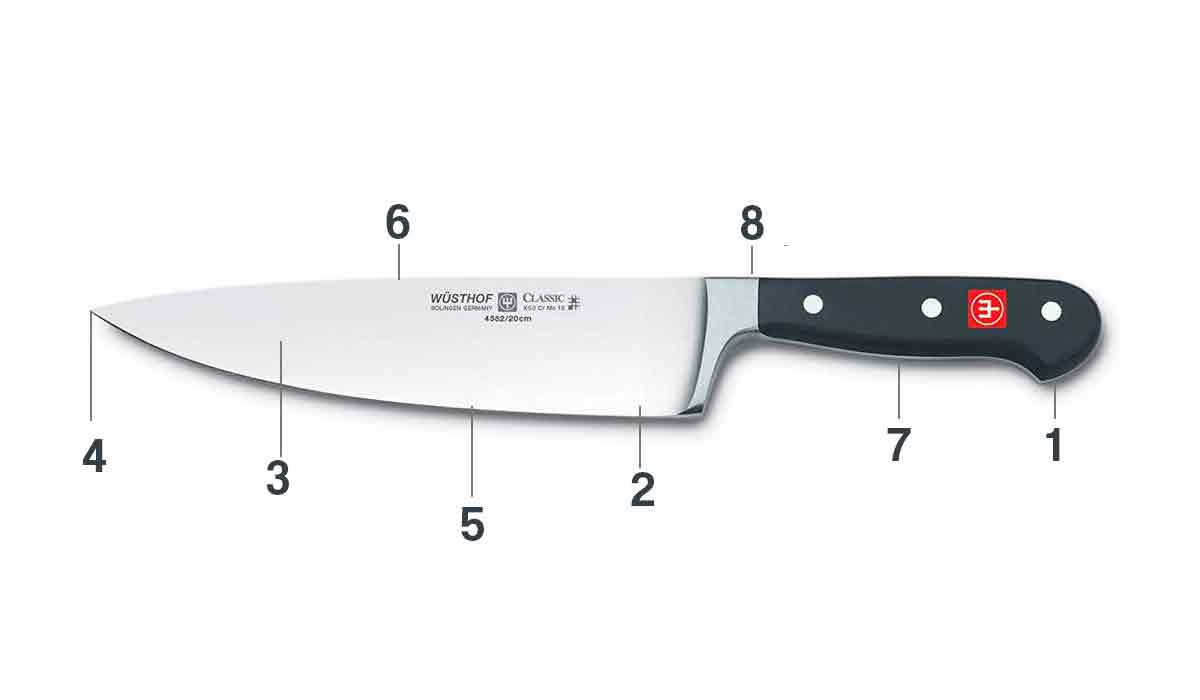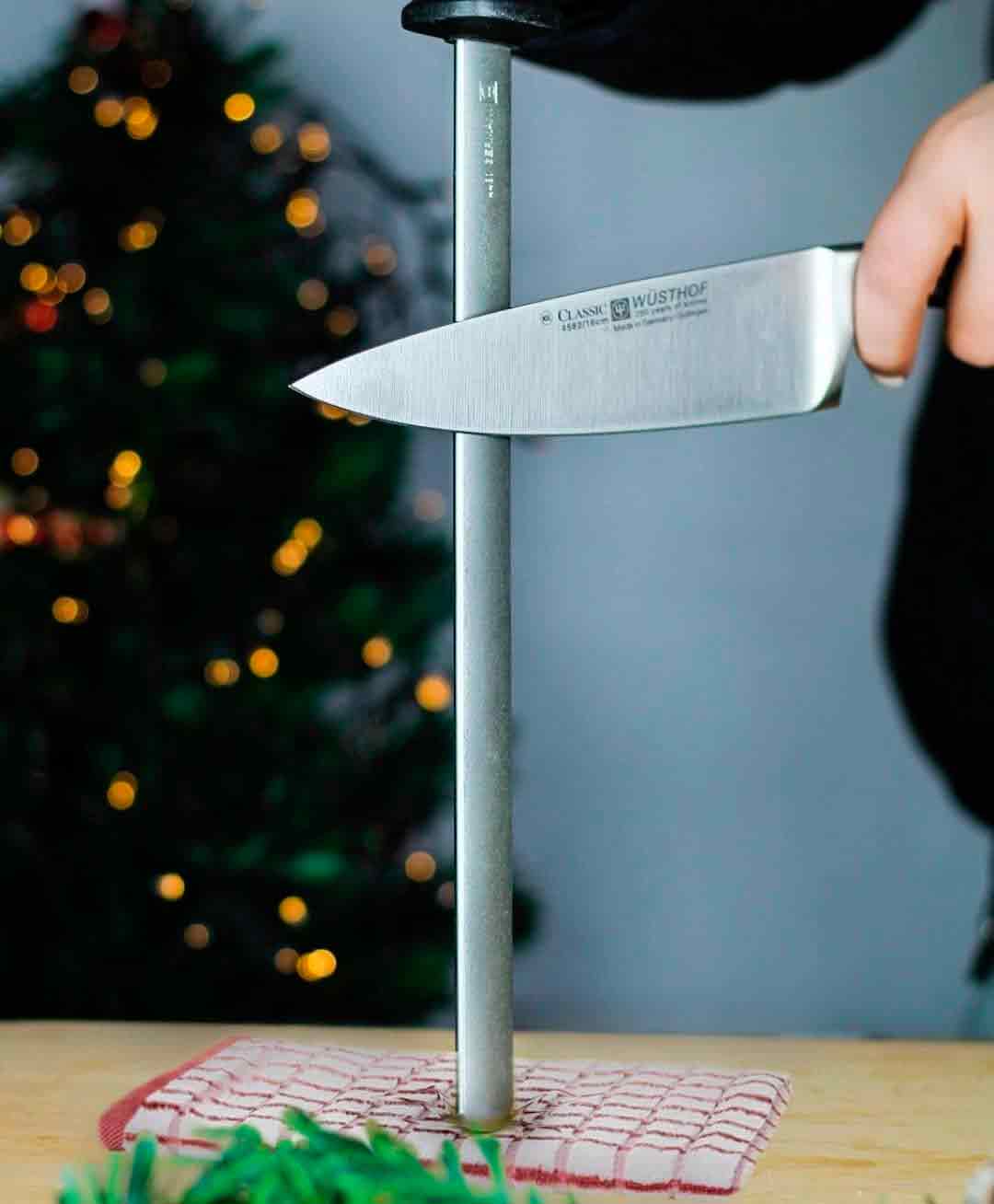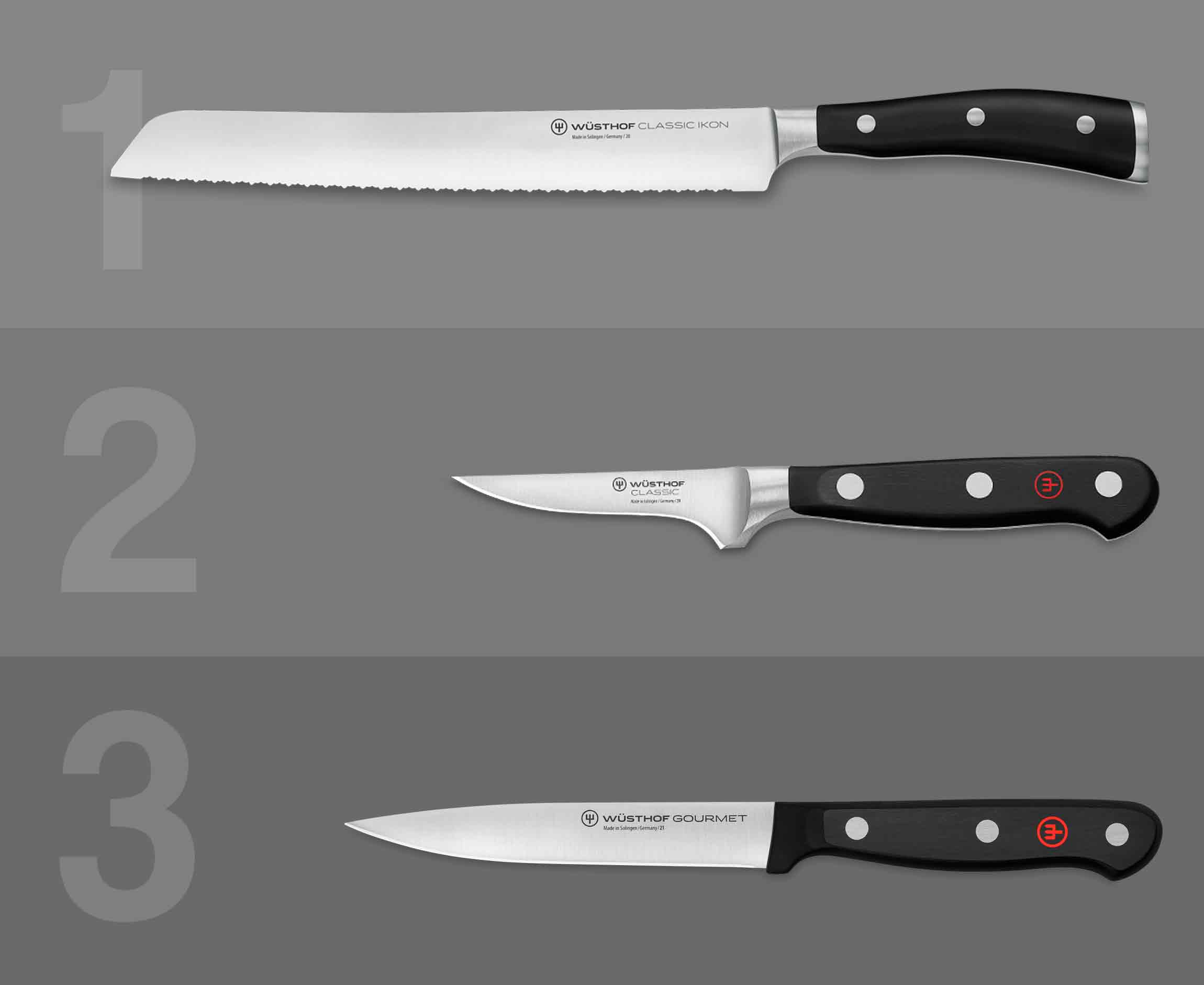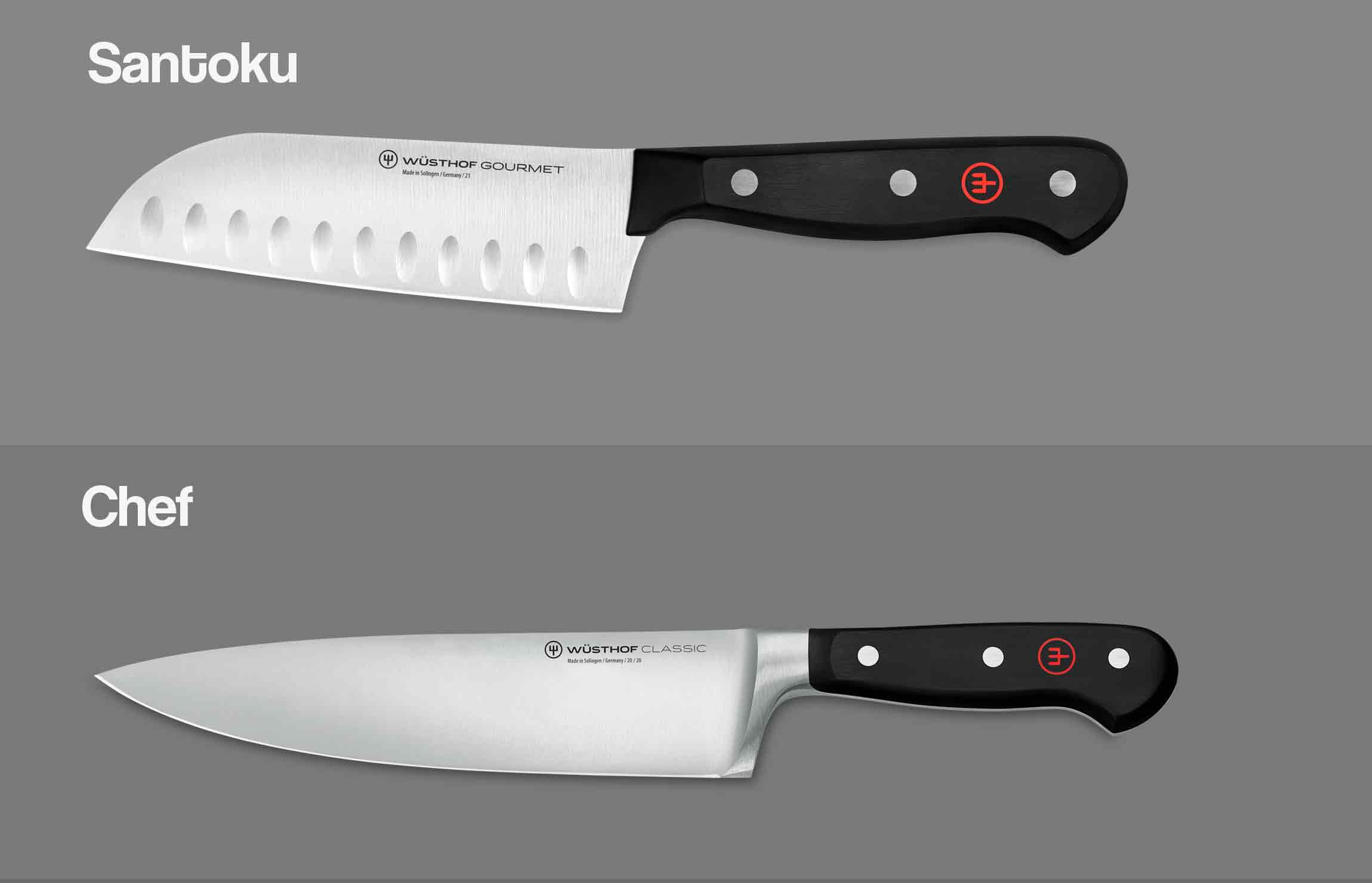
No single feature makes a knife objectively better than another. Instead, they indicate how the knife is designed to function. However, it’s essential to know the names of each feature to understand your personal preferences.
Anatomy of a Chef’s Knife

1 – Butt
: The rear part of its handle.
2 – Heel
The rear end of the blade, closer to your fingers.
3 – Tip
The front half of the blade. Should not be confused with the point.
4 – Point
The literal sharp bit at the end of the knife.
5 – Cutting Edge
The sharp side of the blade. Handle with care.
6 – Spine
The top of the blade. Some people lay their index fingers along the spine’s length when cutting, but this is deemed a poor technique.
7 – Tang
The steel that extends beyond the knife blade and into the handle. When a knife has a full tang, it means the steel goes all the way down.
8 – Bolster
The thick strip of steel between the knife handle and the heel. A full bolster extends up to the heel; a half bolster stops before the heel. Some knives have no bolster at all.
Granton Edge
The dimples on the blade. Not all knives have them. In theory, they prevent food from sticking as you cut.
Keep Your Chef’s Knife Properly Sharpened
If you purchase a professional knife, you need to maintain an edge on it; otherwise, it’s like owning a car and not putting fuel in it. If you have a professional knife sharpener in your area, you can outsource the task.
How to Sharpen a Knife with a Stone

1 – First, you need to soak the stone for about 4 to 5 minutes. A suggestion is to always keep it in a container with water.
2 – Then, note that the stone has two sides: one more porous and another smoother. Those who sharpen knives regularly can generally use just the finer side of the stone (less porous).
3 – Slide the knife over the entire stone, keeping it at an angle of approximately 30 degrees.
How to restore knife sharpness with the honing steel, check out:

1 – Hold the honing steel vertically, with the tip facing upwards.
2 – Slide the knife along the entire length of the steel at an angle of about 15 to 20 degrees, making outward to inward motions, always being careful not to hurt yourself.
3 – Repeat the same movement and number of strokes on both sides of the knife.
After sharpening, check the blade’s sharpness by gently sliding it over a soft tomato. The knife should bite into the fruit immediately without pressure.
Learn the right way to cut
If you’re looking to up your cutting game, follow these tips:
Imagine your cutting board is a clock. Most people point the knife towards noon, placing the food horizontally on the cutting board. But if you angle your knife so it points towards 10 o’clock (and adjust the food to be parallel), the knife becomes an extension of your forearm and is easier to handle. Keep your knife in contact with your cutting board or work surface. There’s no need to lift it off the board for each cut.
Use your knife only for food. Avoid using your chef’s knife for tasks like opening boxes. A chef’s knife is your most important kitchen tool, buy a pair of kitchen scissors for boxes and bags!
Avoid the dishwasher
Regardless of the manufacturer’s instructions, never put the chef’s knife in the dishwasher. And while you’re at it, never throw it in the sink. Every time the knife blade hits something – like the plastic prongs of your dishwasher or the metal sides of the sink – it has the potential to dull, and you want to keep the blade as sharp as possible for as long as possible.
Instead, hand wash the knife with a mild detergent and then use a clean dishcloth or paper towel to thoroughly dry. (If you air dry, it might develop water spots or rust spots.)
Frequently Asked Questions
Should I get a knife set?
Many experts believe that knife sets are a waste of money. “Buy knives, one at a time,” says Chef Muse on the website www.reviews.com. “Each chef will have their knife set; a set is too restrictive and too prescriptive.”
How many other kitchen knives do I need?

After investing in a quality chef’s knife, you can expand your collection with any of the following:
- 1 – A serrated bread knife for cutting bread.
- 2 – A paring knife – which has a very short blade – for tasks like trimming apples or potatoes.
- 3 – A carving or filleting knife might be useful depending on the cuts of meat and fish you commonly cook.
- As a general rule, if the purpose of the knife is in its name (bread knife, filleting knife, even steak knife or grapefruit knife), it will be a task hard to accomplish with an all-purpose chef’s knife.
What’s the best type of steel for a kitchen knife?
The best steel for chef’s knives typically falls between 55-60 on the Rockwell hardness scale – which is strong enough to maintain a sharp edge, but soft enough to avoid being overly brittle. The harder the steel, the longer it stays sharp, but the harder it will be to sharpen on your own, often requiring a professional service to restore it.
What’s the best way to hold my knife?
According to Chef Bob Tate, you should hold your kitchen knife in a pinch grip: hold the front of the handle, with the thumb and forefinger wrapping around and pinching the base of the blade.
What’s the difference between a chef’s knife and a Santoku knife?

At a glance, Santoku knives and chef’s knives look almost identical. But each caters to a different cooking style. Santoku knives are shorter, lighter, and thinner, with a rounded tip and a flat edge. This means that cutting requires an up and down chopping motion. The blade of a chef’s knife is curved, allowing for a rocking motion against the cutting board.
The Santoku excels in tasks requiring agility such as finely chopping herbs or precise cuts. The downside is it’s not as versatile as a chef’s knife and will likely be less practical for larger tasks, like breaking down a chicken or slicing thicker vegetables like a squash.

